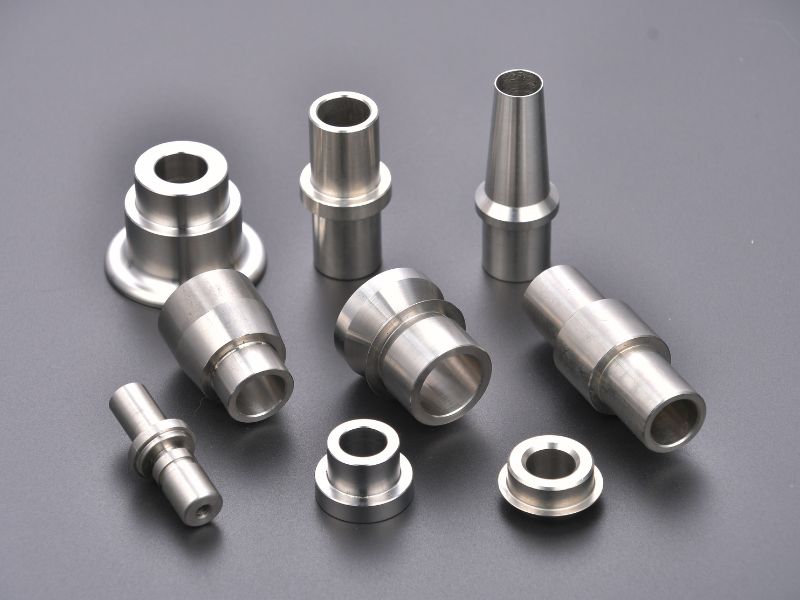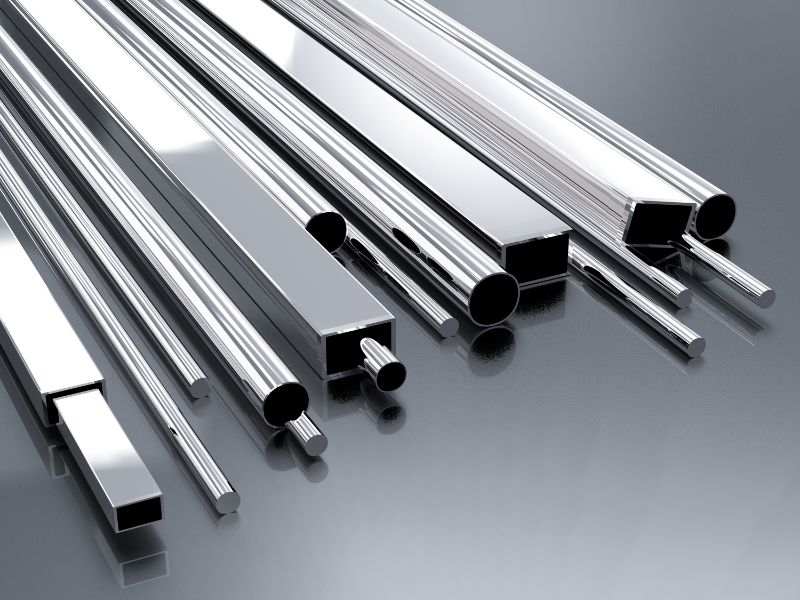- By Profab /
- October 10, 2025

Table of Contents
What Is 18/8 (304) Stainless Steel?
18/8 (304) Stainless Steel Composition
You might wonder what 18/8 stainless steel means. These names usually mean the same thing. Both have about 18% chromium and 8% nickel. This gives them good corrosion resistance and a shiny look. 304 stainless steel meets strict ASTM rules, so you can trust its quality. 18-8 stainless steel has the same main parts but might not meet all the rules. Both are part of the austenitic family, so they do not rust easily and work in many places. If you compare 18-8, 316, and 314, you see that 304 and 18-8 are almost the same. 316 is different because it protects better.
Pros and Cons of 18 8 304 stainless steel
18-8/304 stainless steel is the most affordable and widely available grade. It offers an excellent balance of properties for general use. 18 8 ss is very cost-effective. It resists general corrosion in the atmosphere and mild chemicals. It also has excellent formability and weldability, making fabrication easy. 304 ss is the standard choice for kitchen equipment, hardware, and architectural trim in mild environments. However, 18 8 304 stainless steel has poor resistance to chlorides. This makes it unsuitable for coastal or marine environments. In such conditions, it can suffer from pitting and crevice corrosion. It may also become slightly magnetic after cold working.
Common Uses of 18-8 (304) stainless steel
18-8/304 stainless steel is the most widely used and versatile grade in the industry. It is the leading material in the Food and Beverage sector. It is used for kitchen sinks, cutlery, cookware, and industrial equipment such as brewing and dairy tanks. The material is non-reactive and highly sanitary. In Architecture and Construction, it offers a cost-effective, durable, and attractive option for handrails, trims, and general fasteners where there is no salt exposure. It is also common in the Automotive industry for exhaust systems. In the Medical field, it is used for non-critical instruments. Across Industrial applications, it serves in storage vessels and piping that handle mild chemicals.
What is 316 Stainless Steel?

316 Stainless Steel Composition
You may ask why 316 stainless steel is special. The reason is molybdenum. This metal is added to 316 stainless steel. It has about 2-3% molybdenum. This small amount helps a lot. It lets the steel fight pitting and crevice corrosion. This is very helpful in places with lots of salt or chemicals.
When you look at 18-8 vs 316 vs 314, you see the difference. Molybdenum makes 316 the best for hard jobs. If your project will be near saltwater or strong chemicals, 316 stainless steel gives more protection and lasts longer.
Pros and Cons of 316 Stainless Steel
316 stainless steel is a premium, high-performance grade. Its main advantage is superior corrosion resistance, achieved by adding 2%–3% molybdenum. This makes it the ideal marine-grade material. It offers strong protection against chlorides such as salt water and brines, as well as industrial acids. It also retains strength and resists oxidation at high temperatures. These qualities make it suitable for medical implants and chemical processing.
However, it is more expensive than 304 because of the molybdenum content. It also has lower machinability and formability, making it harder to work with and more prone to seizing or galling in threaded applications.
Best Uses of 316 Stainless Steel
316 stainless steel, often called “marine grade,” is best used in environments where its strong resistance to chlorides and harsh chemicals justifies the higher cost compared to 304.
Marine and Coastal Environments: The molybdenum content gives 316 excellent resistance to pitting and crevice corrosion from saltwater, brine, and chloride-rich air. It is ideal for boat fittings, ship railings, dock hardware, offshore platforms, and coastal architectural fasteners or panels.
Chemical, Pharmaceutical, and Hygienic Processing: The alloy resists strong acids, alkalis, and cleaning agents. It is widely used for chemical tanks, piping, heat exchangers, and pharmaceutical equipment. It is also used in cleanrooms, surgical tools, and implants because of its biocompatibility.
Food and Beverage Processing (Harsh Environments): While 304 is common, 316 is preferred where high-acid foods, harsh cleaners, or large-scale brewing and dairy systems are involved. Its non-reactive, easy-to-clean surface helps maintain strict sanitation.
In short, 316 stainless steel is chosen when a part or structure faces constant exposure to salt, acids, or strong cleaning chemicals.
18 8 Stainless Steel Vs 304 Stainless Steel Vs 316 Stainless Steel: Key Differences
Corrosion Resistance
Corrosion resistance is very important when picking stainless steel. Here is how each type handles tough conditions:
18-8 stainless steel can rust when near chlorides, so it is not good for boats.
304 stainless steel also does not do well with saltwater, just like 18-8.
316 is called “marine grade” because it does not rust from chloride, so it is great for boats and docks. It has 2–3% molybdenum, which helps it stand up to strong chemicals and saltwater.
Tips
If you need stainless steel for outside, boats, or chemicals, 316 is the best pick. For inside use, 18-8 or 304 is a good choice.
Strength and Durability
You want your project to be strong and last a long time. Strength and durability are important for every job.
Both 304 and 316 stainless steel are strong. You can trust both grades to work well. But 316 stainless steel lasts longer and handles stress better, especially in tough places. If you compare 18-8 vs 316 vs 314, 316 is the best for hard jobs.
Formability and Ductility
For severe forming applications such as deep-drawn components, 304 stainless steel performs better. It has very good formability and high ductility, allowing it to be deeply drawn without cracking. This is why 304 is widely used for seamless kitchen sinks and complex saucepan shapes. 316 stainless steel has slightly higher yield strength and a faster work-hardening rate. It still offers good formability but is less suitable for extremely deep drawing operations.
High-Temperature Performance and Creep Resistance
For intermittent use, both 304 and 316 can handle up to 1562°F. 304 also has a slightly higher melting point than 316, which melts between 2,500°F and 2,550°F.
Although 304 melts at a higher temperature, 316 usually performs better in high-temperature structural applications. For example, at 800°C, 316 keeps a yield strength of around 150 MPa—about 20% higher than 304. This makes 316 more reliable for demanding, high-stress uses such as parts in aircraft engines.
However, if the part is not load-bearing, such as a simple heat transfer surface, 18-8(304)is also a good choice.
Conclusion
Choosing between 18-8, 304, and 316 stainless steel depends on your project’s environment and performance needs. 18-8 offers affordability and general corrosion resistance for common applications. 304 provides excellent formability and hygiene, making it ideal for food and household use. 316 excels in harsh, chloride-rich conditions with superior corrosion resistance. Each grade has unique advantages suited to specific demands. For high-quality, custom stainless steel components, Profab Machine delivers precision-engineered solutions that ensure durability and value in every application.
FAQ
What is the main difference between 304 and 316 stainless steel?
304 stainless steel works well for most jobs. 316 stainless steel has molybdenum, which helps it resist rust from saltwater and chemicals. You should pick 316 for tough environments.
Can you use 304 stainless steel outdoors?
You can use 304 stainless steel outside in dry areas. It may rust near saltwater or chemicals. For coastal or harsh places, you should choose 316 stainless steel.
Is 18-8 stainless steel safe for food contact?
Yes, 18-8 stainless steel is safe for food. You see it in cookware, kitchen tools, and food processing equipment. It resists stains and does not react with food.
Why does 316 stainless steel cost more?
316 stainless steel costs more because it contains molybdenum and extra nickel. These metals make it stronger and better at fighting rust. You pay more upfront, but you save on maintenance.
How do you choose the right stainless steel for your project?
You should look at your project’s environment, budget, and safety needs. Use 304 for general jobs. Pick 316 for marine or chemical use. Always match the grade to your project’s demands.
Send Inquiry Now
Related Resource
